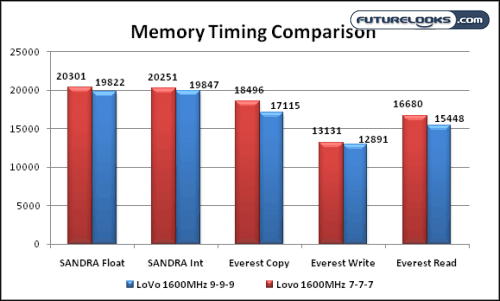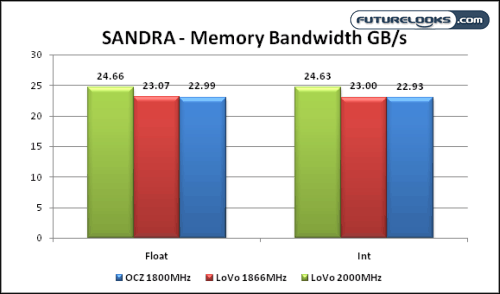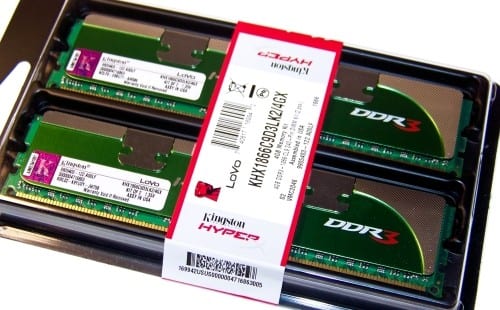System Setup and Test Methodology

As mentioned, while there could be some random board issues, the memory posed no issues booting up and detecting XMP profiles properly on a range of boards from ASUS, MSI, GIGABYTE, and even ASRock. However, you should double check your voltage settings in the BIOS once you boot up.
Most of the boards automatically tuned the memory voltage to 1.5 volts, which is standard. But because these are low voltage modules, you may have to manually apply the settings just to run at the proper specifications. If you don’t have 1.25V or 1.35V settings, it won’t hurt the memory at all to go 1.3 or 1.4 volts, but at a power consumption penalty of course.
Here’s the test system we’ve happily used many times now to ensure for optimal performance:
- Intel Core i7-870 Lynnfield LGA1156 Processor
- GIGABYTE GA-P55A-UD6 Motherboard
- Memory Kit One: Kingston HyperX 4GB 1866MHz DDR3 Memory (as tested)
- Memory Kit Two: OCZ Platinum4GB 1800MHz DDR3 Memory
- ZOTAC Geforce GTX285 Infinity Edition Video Card
- Kingston V+ 128GB SSDNow (Rev2.0)
- Antec CP-850 Watt Power Supply
Windows 7 Pro 64-bit was our operating system of choice for all tests and we made sure that the latest drivers and BIOS were used. For presenting memory performance numbers, we used SANDRA, Everest Ultimate Edition, Sarsky’s HD Compilation video benchmark, and Unigine Heaven DX10 Demo.
Over Clocking and Under Clocking Benefits?
Like anything the HyperX team produces, there’s always something extra underneath the hood. But the thing we need to remember is that the LoVo kit is engineered to provide more performance at high frequencies requiring less power. That said, here’s what we experienced.

Our particular test board doesn’t provide .05V increments. So, 1.4V managed to give us about 1950MHz without issue. Going up to 1.5V which starts going in to the previous JEDEC standards, the kit was quite nimble at 2000MHz using 9-9-9-27 timings. Going much higher will have sporadic results and stability issues given the design of the ICs.
There is one benefit you may not know about. Even if your motherboard doesn’t support memory above 1600MHz, you can still get great performance from these extremely fast kits. Without modifying the voltages, users can lower the frequencies to 1600MHz using 7-7-7-21 timings, or 1333MHz with 6-6-6-18 timings. Have a look at the chart below to see the gains.

As you can see, the lower timings give you maximum bandwidth and performance that the kits with higher timings can’t hope to match. This will come in handy especially among pro-users who use large data intensive programs like PhotoShop. Kind of cool, huh?
Moving right along, we tested the Kingston LoVo kit using both XMP profiles using memory timings reported by CPUZ. To see if there were extra performance benefits, manual timings were also attempted and tested where possible.
SiSoftware SANDRA Memory Bandwidth

SiSoftware’s easy to use memory benchmark gives us a good idea of the memory bandwidth your processor readily has on hand for getting work done. Our 1866MHz memory kit scores just slightly higher than the 1800MHz kit. This is some massive bandwidth compared to memory from three years ago. Let’s see where this bandwidth will come into play with the coming benchmarking.

